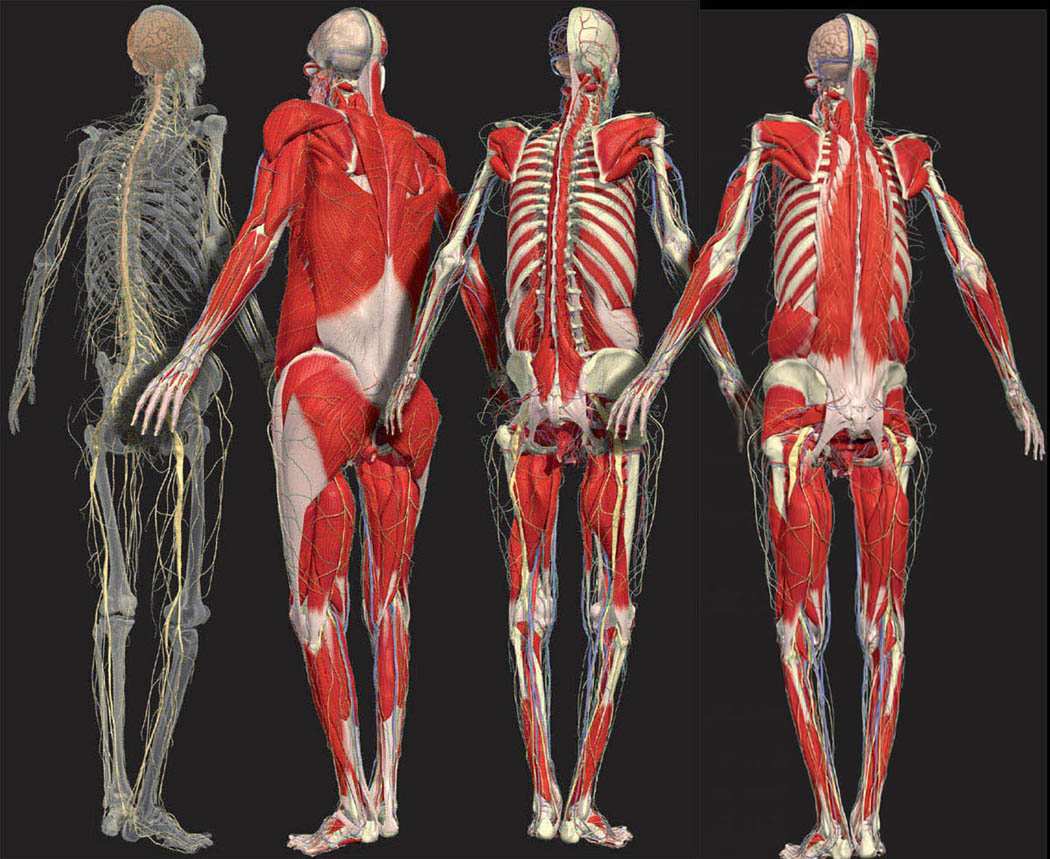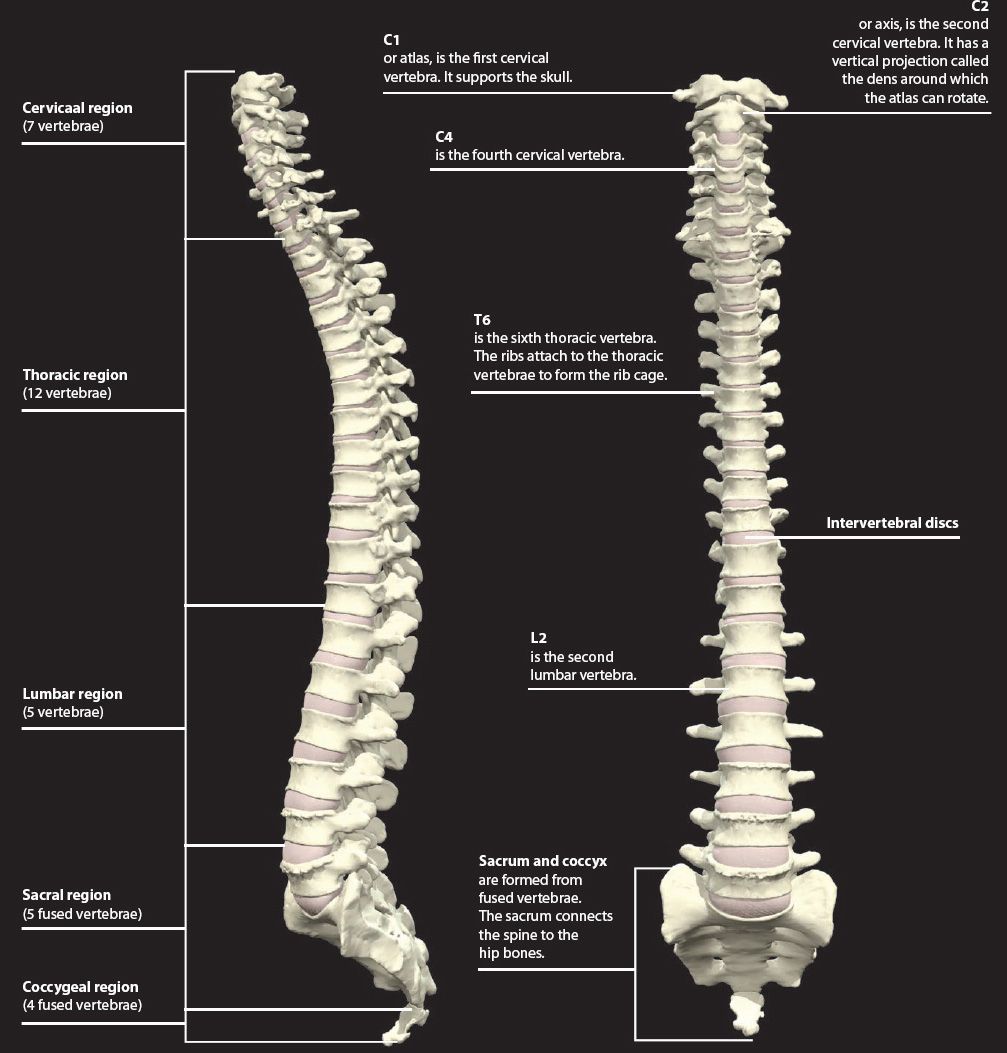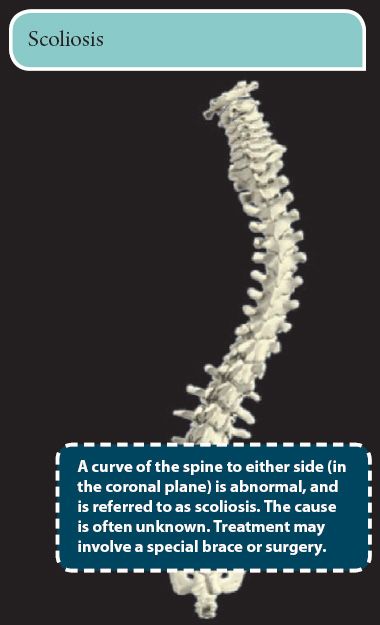The central part of the body between the neck and the hips is known as the trunk.
The rear most part of this area, which provides the trunk with structure and support, is called the back.
The vertebral column (spine or backbone) forms most of the bony framework of the back, with contributions from the ribs, shoulder blades, and pelvis. It is made up of a number of small bones called vertebrae, which are stacked together to form a chain. This arrangement gives strength to the spine, while still allowing it to move.
Numerous muscles are attached to the vertebral column. They help us keep a good posture, and allow us to bend and twist the spine.
Running through the center of the vertebral column, and protected by it, is the spinal cord. This vital structure relays nerve signals between the brain and rest of the body. Spinal nerves leave the spinal cord at different levels to supply the body.

BONES OF THE VERTEBRAL COLUMN
The vertebral column (backbone or spine) forms a strong central axis for the trunk. It is made up of thirty-three small bones called vertebrae, which are stacked together with intervertebral discs between them, to form a strong but mobile column.
The vertebral column is divided into five different regions: cervical, thoracic, lumbar, sacral, and coccygeal. The vertebrae from each region have slightly different features. The normal vertebral column gently curves forward and backward (in the sagittal plane) along its length.

Stay updated, free articles. Join our Telegram channel

Full access? Get Clinical Tree



